Potty Training Boys: A Parent’s Guide
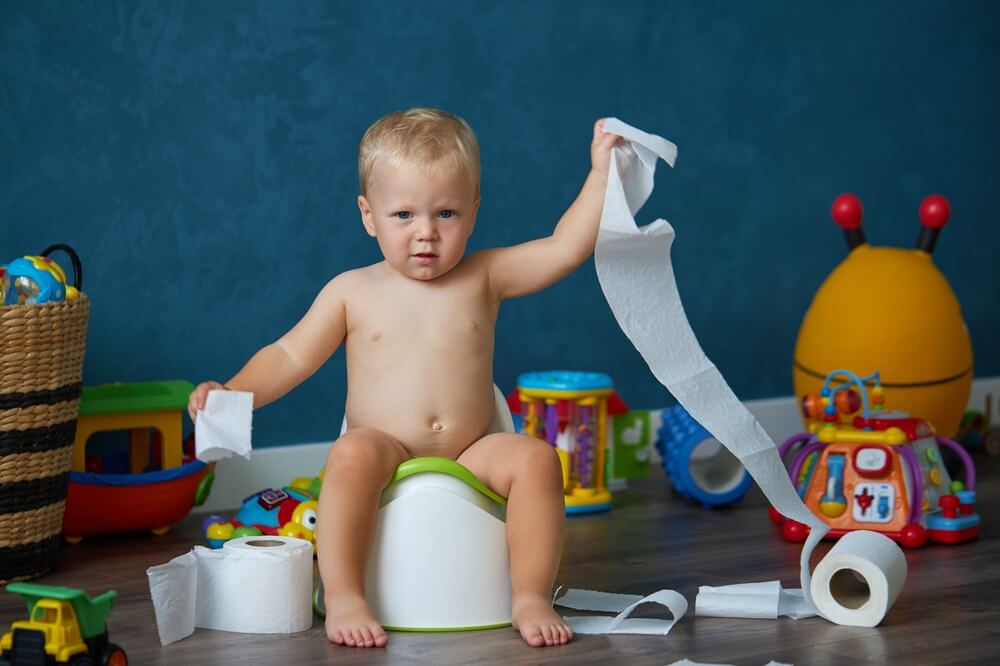
Potty training boys can be a challenge, and some say it’s trickier than training girls. However, it’s not an impossible challenge, and there are plenty of tips and tricks you can use to speed up the process. In this guide, we’ll cover all you need to know about potty training a boy.
Contents:
- What Is the Normal Age for a Boy to Be Potty Trained?
- What Do Parents Need to Be Prepared for?
- How Long Will It Take for My Child to Be Completely Potty Trained?
- How Do You Begin Potty Training a Boy?
- What Is the Fastest and Best Way to Potty Train a Boy?
- Tips for Parents When to Start Nighttime Potty Training for Boys?
- When to Start Nighttime Potty Training for Boys?
- At What Age Should Parents Start to Worry if Their Boy Doesn’t Go Potty?
What Is the Normal Age for a Boy to Be Potty Trained?
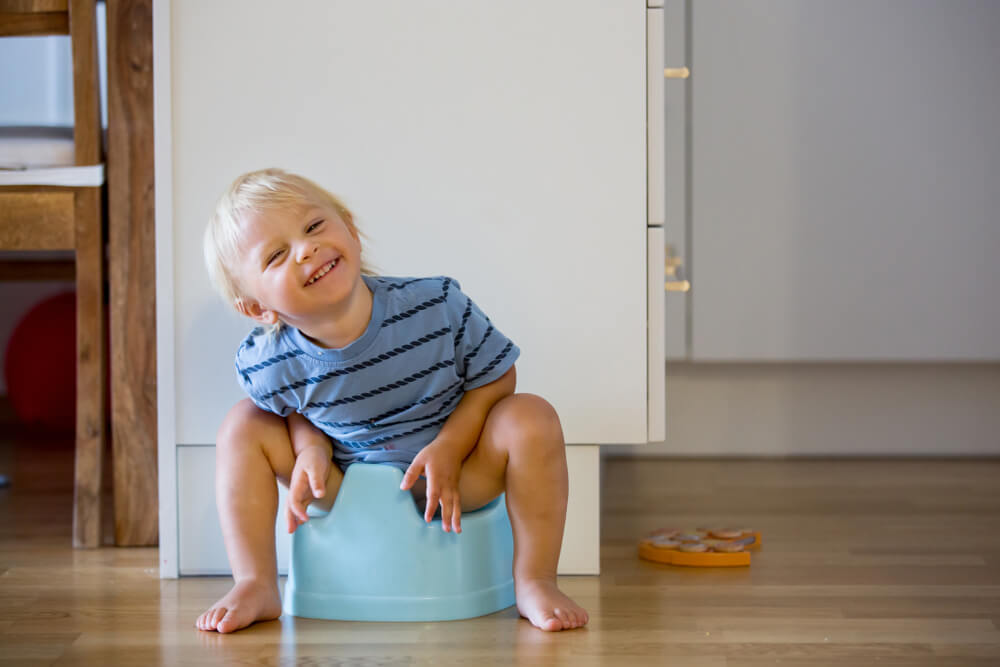
Tomsickova Tatyana/Shutterstock.com
Before you start the process of toilet training or worry about the best way to potty train a boy, it’s important to know when is the right time to start. One of the most common mistakes that many parents make is starting too early or trying to force the process when their son isn’t quite ready.
What is the typical age for a boy to learn how to use a potty? Well, according to surveys and expert reports, the average age when boys start learning to use a potty is at 27 months, which is the equivalent of two years and three months.
In general, kids can be ready to potty train at any stage between 18 months of age and three years of age. Some are earlier learners, while others need a little extra time before they are able to figure out the process.
There’s no need to worry too much if your son isn’t quite ready right away when they reach the age of 18 months. Some kids need more time, and it’s best to pay attention to them and look for the signs that your child might be ready, which leads us to the next question.
How Do I Know if My Son is Ready to Be Potty Trained?
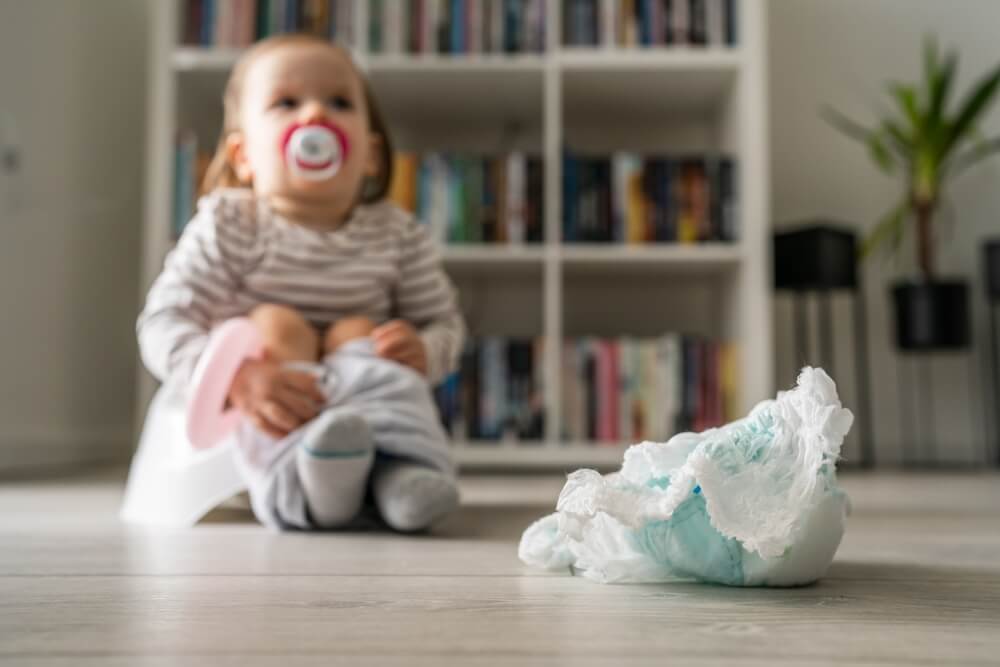
Miljan Zivkovic/Shutterstock.com
The first big step of the potty training process for boys or girls is to figure out when your child is ready to start learning. If you start too early, the process may be much more difficult and frustrating for both you and your child, but if you look for the signs and identify the right time, it should be a smoother experience.
As stated above, the average age range when kids learn how to use a potty is between 18 months and three years. So, when your son reaches 18 months, you can start looking for the following signs to see if the time is right:
- Your son should be able to walk around relatively easily in order to reach the potty.
- They should be able to take a seat on the potty and get back up again.
- They should be able to pull their pants down and up.
- They should be able to stay dry for at least two hours.
- They should be able to understand and follow simple commands.
- They should be able to let you know when they feel the need to go to the bathroom.
- They may also display an interest or desire to use the potty and wear underwear.
What Is the Difference Between Training Girls and Boys?
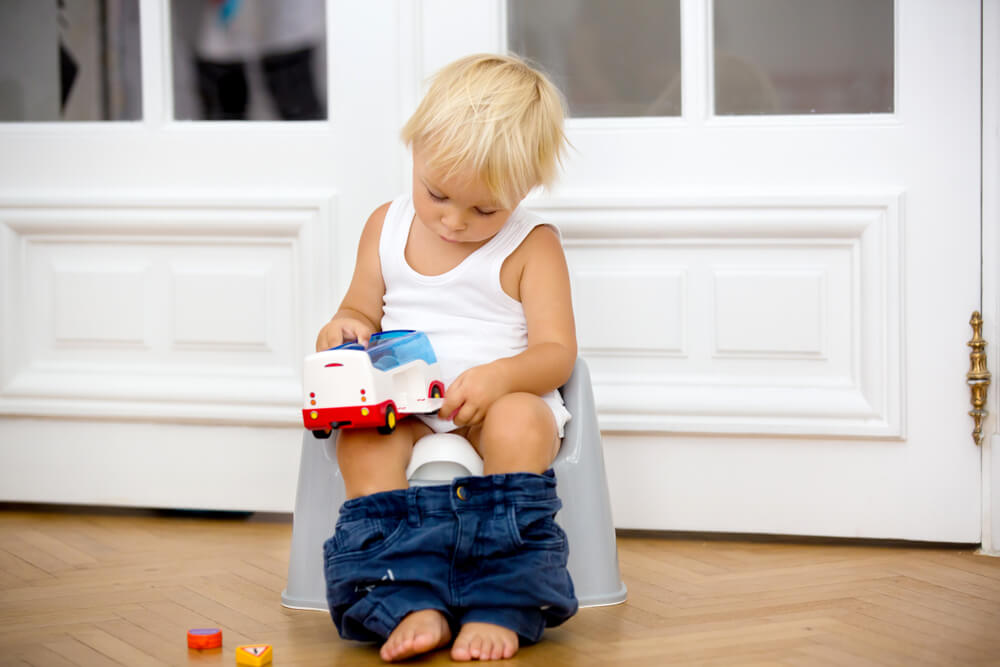
Tomsickova Tatyana/Shutterstock.com
In general, the concept and process of potty training is basically the same no matter whether you’re training a girl or a boy. However, there are a couple of key differences that parents need to be aware of before they begin.
- Readiness—One of the big differences between girls and boys is that boys tend to need a little more time to develop the various skills required to start the process. For example, studies suggest that girls can pull their pants up and down several months sooner than boys, on average.
- age—Following on from the previous point, it’s also possible that boys might be a little older, on average, when they master the practice of using a potty compared to girls. Some studies have suggested that there’s a difference of around six months in terms of how long it takes boys to learn when compared to girls.
- Physical—It’s also worth noting that there are physical differences between boys and girls which can affect the process of toilet training. With boys, it’s possible to let them stand up or even make use of a practice urinal as they learn to urinate, while girls simply sit down on the potty. If boys are taught to stand up, they’ll need to learn how to aim to avoid making a mess.
Overall, while there may be some differences between training boys and girls at a broad level, it’s important to remember that every child is different. Each one will learn in their own way and in their own time, so you shouldn’t make any assumptions or go into the process believing that a boy will be more difficult than a girl, or vice versa.
What Do Parents Need to Be Prepared For?
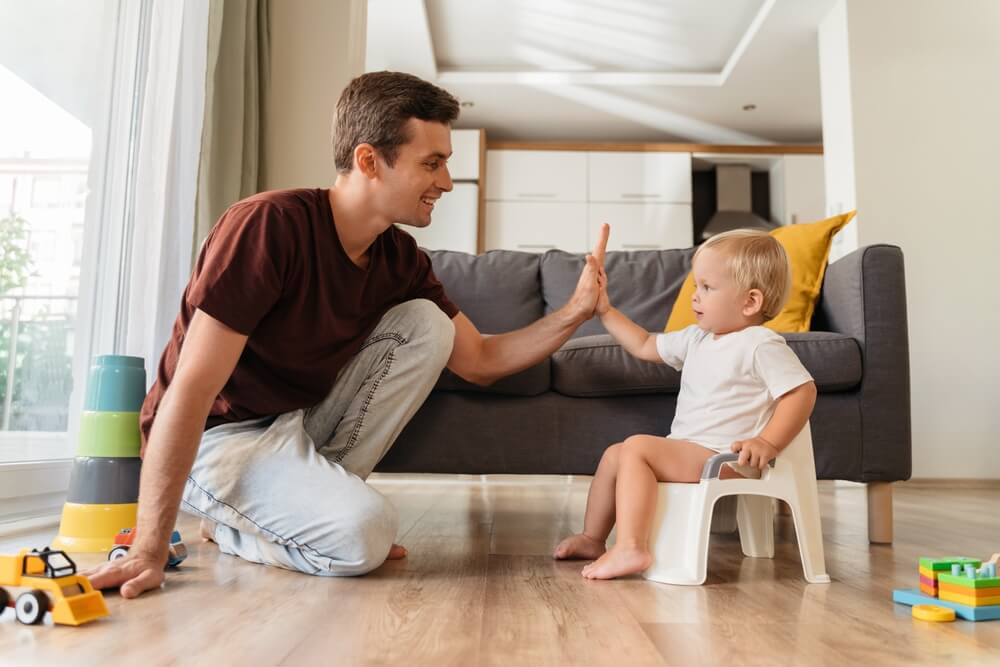
Arsenii Palivoda/Shutterstock.com
In general, parents need to be prepared for things to go wrong. The toilet training process is rarely an easy one, and young children simply are not physically capable of having total control over their bladders and bowels, so they will have accidents over time.
You need to be ready for these moments to occur and be able to react the right way; rather than getting mad or scolding your child if they have an accident, you have to accept that it’s natural and try to move on from it.
You should also be prepared for the process to take time. Often, it can take months or even years for children to develop adequate potty usage habits, and even when they’re at grade school age, they may still have accidents or wet the bed from time to time.
It’s important to acknowledge and understand that potty training is a marathon, not a sprint. It can’t all be completed in a matter of days, and it will require patience and perseverance, but even if it seems tough, you will get there in the end.
How Long Will It Take for My Child to Be Completely Potty Trained?
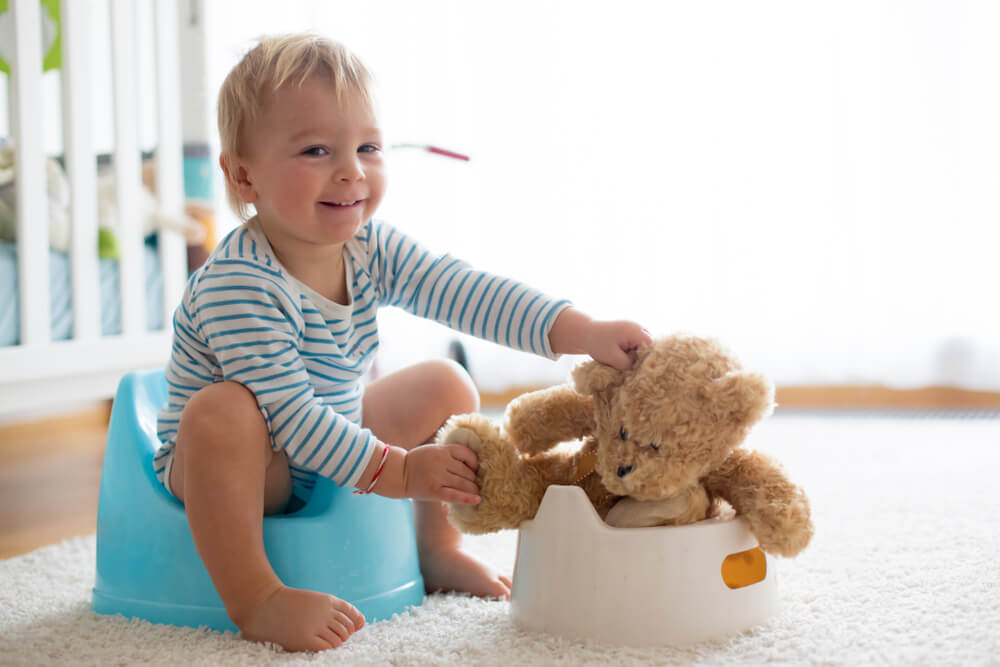
Tomsickova Tatyana/Shutterstock.com
There’s not a single clear answer to this question. It really depends on quite a lot of factors, like when you start, what method you use, the attitude and personality of your child, the health of your child, and so on.
As explained above, you need to be prepared for the process to last for quite a while. Many parents find that it takes at least a year for their children to start to master the potty, and most kids won’t be consistently using it and avoiding accidents until they’re around four or five years old.
How Do You Begin Potty Training a Boy?
Before you begin potty training a boy, it helps to do some research. Look online for guides or check out books Potty Training in 3 Days and The No-Cry Potty Training Solution to learn potty training tips for boys, different methods, how the process usually goes on, and so on. This should help to prepare you for the challenge ahead.
It’s also a good idea to try and decide on a method that you’re going to use before you start. There are multiple methods out there, like the 3-day method and the Brazelton method (check out the video above), and some might be better suited for your family and situation than others. Either way, it’s good to pick one to start off with and try to stick with it at first.
You’ll also need to make sure you’ve got all of the essential supplies ready to go, such as the actual potty chair itself, some training underwear, some loose clothing that your little boy can take off easily, and maybe even some treats or a reward chart to give your son some motivation in the early stages.
What Is the Fastest and Best Way to Potty Train a Boy?
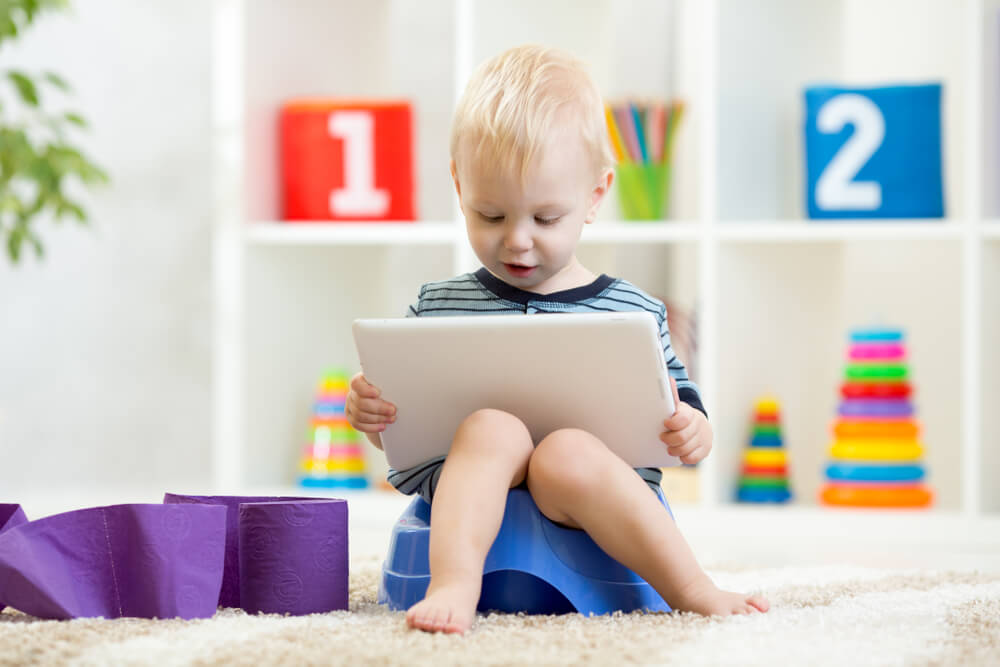
Oksana Kuzmina/Shutterstock.com
As stated above, there are several different methods that you may use to potty train a boy. We can’t really divide these methods into “right” and “wrong” or say that one is the “best”, as they will vary and some will work better for some people than others.
However, there is a general step-by-step formula that you can follow which should help you on the right track for training your child in how to use the potty. Read on for the key steps to follow and feel free to modify them along the way to suit your needs best.
Step 1. Preparation
Before you actually introduce your son to the potty for the first time, the first step of the process is to get prepared. This means doing all necessary research to learn about different methods and techniques, as well as getting all the items you need to start training.
There are lots of useful guides and resources online, as well as in parenting books, so you should be able to easily find tips, advice, and tutorials on how to teach your boy to use the potty. You can also purchase various items to aid in the process like comfortable potty chairs and absorbent underwear.
Remember that you don’t need to buy everything, so try to set yourself a budget and focus on the things you think will be most effective. You may just want to stick to the absolute basics to begin with and focus purely on the potty, leaving things like toys, books, and games for later.
Step 2. Set a Start Date
It’s always good to have a start date in mind when you want to begin something big like potty training. So, once you’ve prepared your items, set yourself a date to begin the process and stick with it. This will give you some structure and something to aim for.
Step 3. Start the Process
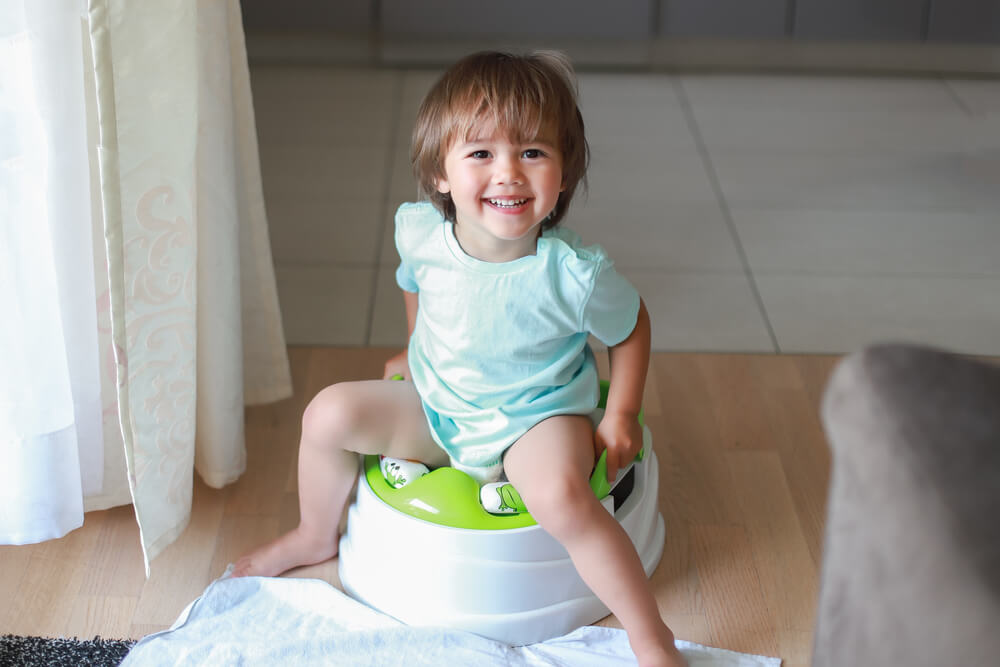
Onjira Leibe/Shutterstock.com
Next, it’s time to begin. It’s a good idea to start at the weekend when you have time to spend with your little one, and a good way to start is first thing in the morning, as many children want to use the bathroom when they wake up.
You should also schedule other potty breaks throughout the day, like after meals and before bed, to give your son time to get into the rhythm. You can help them sit on the potty and teach them the importance of wiping and washing their hands afterward.
Step 4. Going Outside
Once your child is relatively comfortable with the basics of using the potty at home, you can try bringing it with you when you go out or visit a relative. Remember some spare clothes, just in case of accidents.
Step 5. Standing to Pee
Some boys are happy to sit on the potty to pee and continue this as they get older, but it’s still important to teach them how to pee while standing, too. You could invest in a practice urinal to help with this, and it’s recommended to show your son how to hold onto his penis and aim it correctly, keeping his eyes down to make sure he doesn’t make a mess.
Step 6. Ditch the Diapers
Once your son is reliably using the potty, it’s time to wave diapers goodbye during the daytime. This is a big achievement for any child and many young ones will be eager to make the switch to proper underwear. From there, you can move on to nighttime training (more on that below).
Tips for Parents
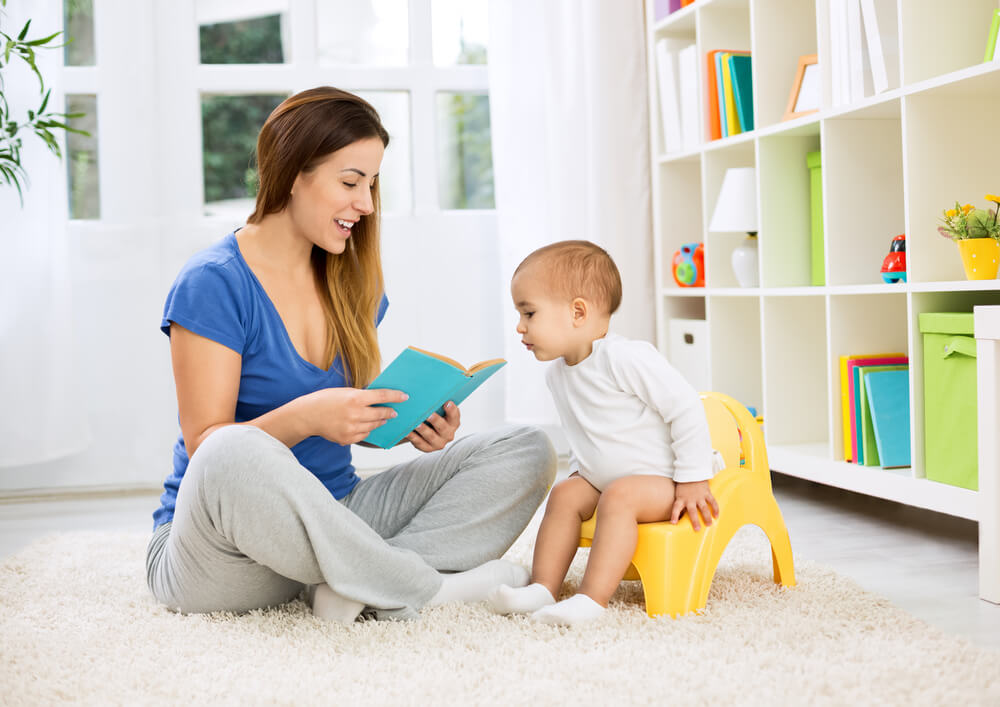
didesign021/Shutterstock.com
Next, let’s take a look at some tips for potty training boys that may help to make the process a little easier for both you and your son:
- Start off slow with potty training and build up gradually over time.
- Talk about the potty often with your son to get them used to.
- Use rewards or incentives to motivate your son.
- If your son has been on the potty for five minutes or more and nothing happened, take a break and don’t force it.
- Let your little one get naked when using the potty, as this often helps them feel more comfortable.
- Use good quality items and accessories to aid the process.
- Let your son pick out or personalize his potty to make it feel more like his thing.
- Use a doll or stuffed animal to show an example of how to use the potty.
Related: When Do Boys Stop Growing? The Stages of Boys’ Height Development.
When to Start Nighttime Potty Training for Boys?
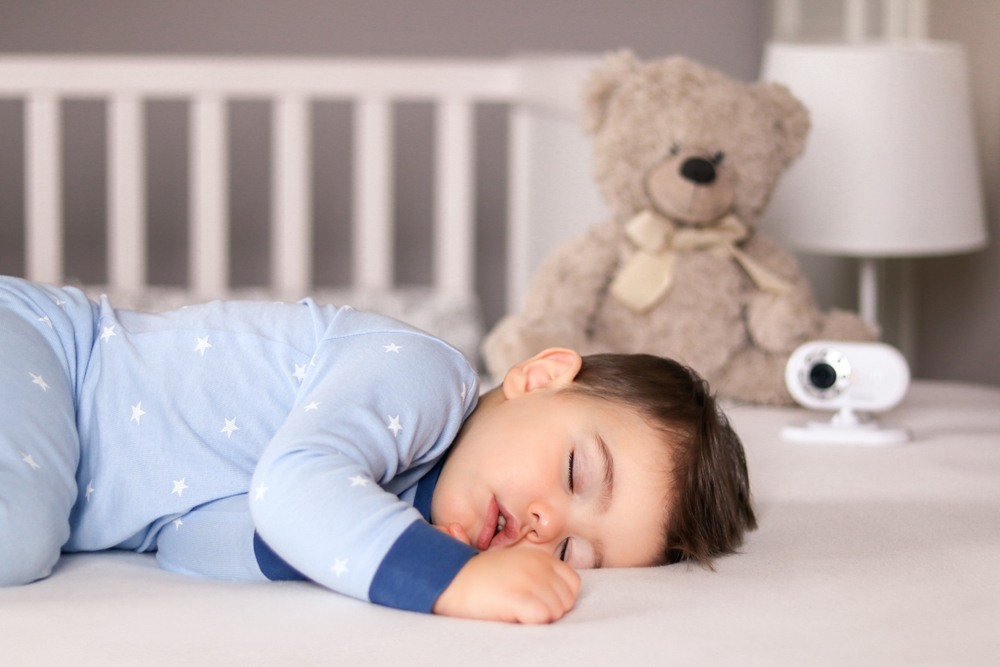
Tatyana Soares/Shutterstock.com
Once you’ve mastered day training with your son, you’ll want to move on to nighttime potty training. This is the next step towards helping your child completely master the usage of the toilet and will help to minimize the risks of nighttime accidents and wet beds for you to clean up.
When should you start? Well, once you feel like your son is able to consistently use the potty during the day, you can start moving to the next step of checking his diapers in the mornings or after naps to see if they’re wet or not.
Once children learn how to use the potty, they tend to stay dry during naps most of the time. You may also notice that they’re more regularly dry in the mornings after a full night’s sleep, too. If so, the time might be right to start nighttime potty training.
Your son might also ask to try sleeping without diapers for a little while. You can try this for a few nights and see how it goes. If your child manages to stay dry more than half of the time (or three in five nights), you may be able to move away from diapers at night.
Here are a few tips to help out with nighttime training:
- Make sure your son uses the bathroom before going to bed.
- Try to limit the amount he drinks in the evenings before bedtime.
- If he does have an accident, try not to make a fuss or get angry, as this could make the process harder.
- Buy some disposable sheets or liners in case of accidents
- Tell your child to go to the bathroom whenever they wake up at night
- Leave the landing or bathroom light on so your child can access the toilet easily
Nighttime training can take a little longer than daytime training, as it involves your son having to hold their urine for a longer period of time. Physically, this can be difficult for young children, and it may take months or even years until a child is able to stay completely dry at night.
In fact, studies suggest that around 1 in 7 children aged between five and seven years old will wet the bed. So, if you find that this process is difficult or notice that your son is still having some accidents, there’s no need to worry.
At What Age Should Parents Start to Worry if Their Boy Doesn’t Go Potty?
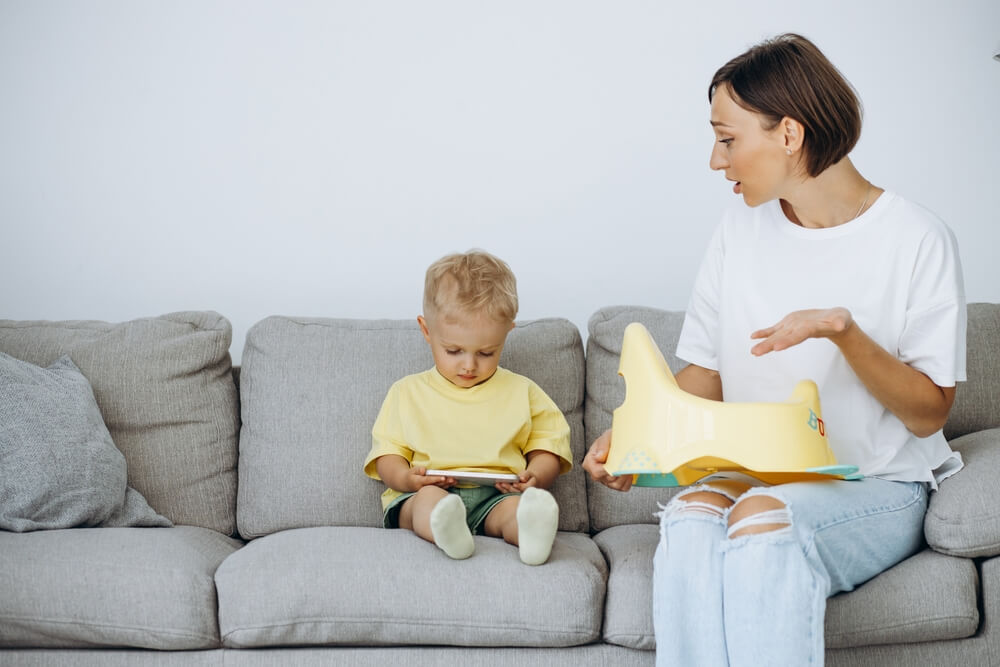
PH888/Shutterstock.com
Potty training takes time. In fact, a child who starts the process at the age of just 18 months might not be fully trained until they reach the age of four years old. And if your son starts a little later, at the age of two or three, for example, it might take them a little longer to get the hang of it.
So, when should you be worried that your little one is getting older and still doesn’t know how to use the potty correctly? Well, reports suggest that many children don’t master this skill until at least the age of four, but most should be able to use the potty without any problems by the age of five.
If your child reaches the age of five years old and is still struggling with the potty, there’s no need to panic, but you may want to reach out to your child’s pediatrician and talk with them about the situation. They’ll be able to provide advice and expert recommendations to help you.
Remember, too, that accidents are normal. Many young children don’t completely master control of their bodily functions right away, and it’s very common for children to have little accidents from time to time, even when they know how to use the potty.
A Challenge You Can Overcome
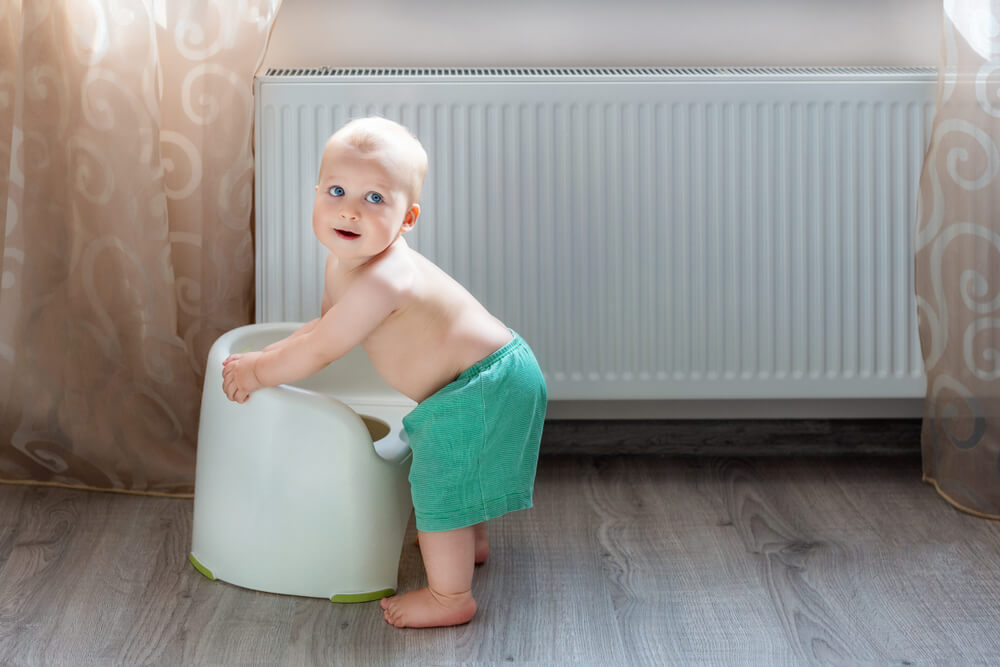
Gorloff-KV/Shutterstock.com
At first, training a boy to use a potty can seem like a really difficult challenge. However, as this guide shows, there are lots of ways to overcome that challenge, and even if it’s tough to start off with, things will get easier over time.
We hope that this guide has given you the tips and tricks you need to make potty training boys much easier. Remember to share the article around with other parents who might also need a helping hand when it’s time to train their children in how to use the potty.
The picture on the front page: oes/Shutterstock.com
Проверьте электронный ящик



















